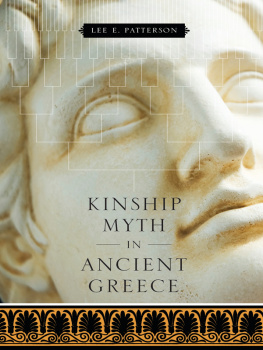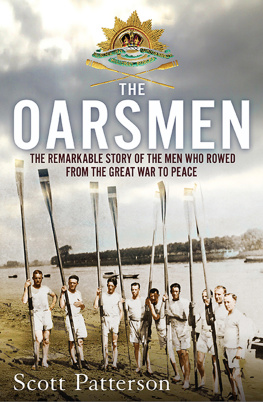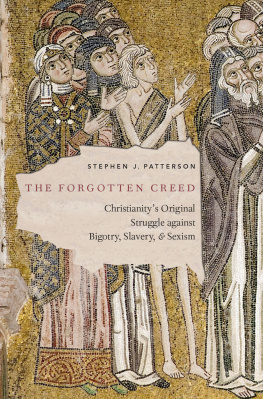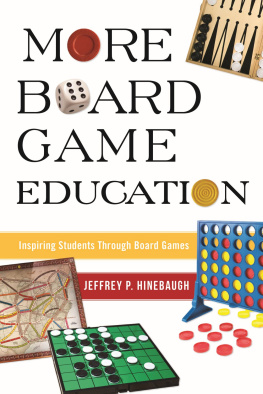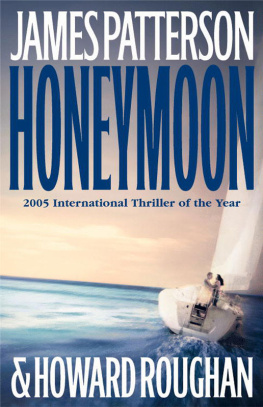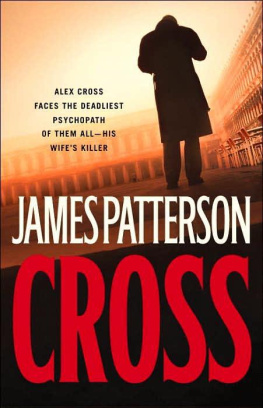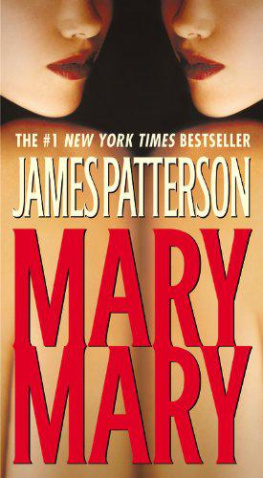Patterson - Brown v. Board of Education
Here you can read online Patterson - Brown v. Board of Education full text of the book (entire story) in english for free. Download pdf and epub, get meaning, cover and reviews about this ebook. year: 2001, publisher: Oxford University Press, genre: Politics. Description of the work, (preface) as well as reviews are available. Best literature library LitArk.com created for fans of good reading and offers a wide selection of genres:
Romance novel
Science fiction
Adventure
Detective
Science
History
Home and family
Prose
Art
Politics
Computer
Non-fiction
Religion
Business
Children
Humor
Choose a favorite category and find really read worthwhile books. Enjoy immersion in the world of imagination, feel the emotions of the characters or learn something new for yourself, make an fascinating discovery.

Brown v. Board of Education: summary, description and annotation
We offer to read an annotation, description, summary or preface (depends on what the author of the book "Brown v. Board of Education" wrote himself). If you haven't found the necessary information about the book — write in the comments, we will try to find it.
Brown v. Board of Education — read online for free the complete book (whole text) full work
Below is the text of the book, divided by pages. System saving the place of the last page read, allows you to conveniently read the book "Brown v. Board of Education" online for free, without having to search again every time where you left off. Put a bookmark, and you can go to the page where you finished reading at any time.
Font size:
Interval:
Bookmark:
BROWN v. BOARD OF EDUCATION
ALSO BY JAMES T. PATTERSON
Americas Struggle Against Poverty in the Twentieth Century
(Harvard University Press, 2000)
America in the Twentieth Century: A History
(Harcourt Brace, 1999)
Great Expectations: The United States, 19451974
(Oxford University Press, 1996)
The Dread Disease: Cancer and Modern American Culture
(Harvard University Press, 1987)
Mr. Republican: A Biography of Robert A. Taft
(Houghton Mifflin, 1972)
The New Deal and the States: Federalism in Transition
(Princeton University Press, 1969)
Congressional Conservatism and the New Deal
(Kentucky University Press, 1967)

IN AMERICAN HISTORY
Series Editors
David Hackett Fischer
James M. McPherson
OF EDUCATION
A Civil Rights Milestone and
Its Troubled Legacy
JAMES T. PATTERSON


Oxford New York
Athens Auckland Bangkok Bogot Buenos Aires Calcutta
Cape Town Chennai Dar es Salaam Delhi Florence Hong Kong Istanbul
Karachi Kuala Lumpur Madrid Melbourne Mexico City Mumbai
Nairobi Paris So Paulo Shanghai Singapore Taipei Tokyo Toronto Warsaw
and associated companies in
Berlin Ibadan
Copyright 2001 by James T. Patterson
Published by Oxford University Press, Inc.
198 Madison Avenue, New York, New York 10016
Oxford is a registered trademark of Oxford University Press
All rights reserved. No part of this publication may be reproduced, stored in a retrieval system, or transmitted, in any form or by any means, electronic, mechanical, photocopying, recording, or otherwise, without the prior permission of Oxford University Press.
Library of Congress Cataloging-in-Publication Data
is available
ISBN 0-19-512716-1
1 3 5 7 9 8 6 4 2
Printed in the United States of America
on acid-free paper
To my students and colleagues at Brown University,
especially my long-time friends
Howard Chudacoff, Jack Thomas, and Gordon Wood
This volume is the first in a series called Pivotal Moments in American History. Each book will examine a large historical problem through the lens of a particular event and the choices of individual actors. The design of the series reflects the current state of historical writing, which gives growing attention to the experiences of ordinary people, increasing sensitivity to issues of gender, class, and ethnicity, and deep interest in large structures and processes. We seek to combine this new scholarship with old ideas of history as a narrative art and traditional standards of sound scholarship, mature judgment, and good writing.
James T. Pattersons Brown v. Board of Education is an appropriate choice for the beginning of our series. Much of Americas history has been made in its courts. In this republic of laws, judicial decisions have often become events of high momentnone more so than the two rulings in Brown v. Board of Education of Topeka that came down from the Supreme Court on May 17, 1954, and May 31, 1955.
Few rulings have ever been so extravagantly praised and condemned. The historical literature has also been deeply divided. Richard Klugers Simple Justice (1975) and J. Harvie Wilkinsons From Brown to Bakke (1979) saw Brown as strongly positive. In the 1990s, academic revisionists argued that Brown did more harm than good: the backlash thesis. James T. Patterson, one of the leading historians of modern America, looks again at the subject from a longer perspective and in a larger context and sees the story afresh.
A theme of our Pivotal Moments is the important of contingency: people making choices, and choices making a difference, often in unexpected ways. The history of Brown is a sequence of contingencies in that sense. It began with Oliver Brown and many other black parents who chose to fight for the education of their children, with high courage and often at heavy personal cost. Many other people made critical choices as the case progressed. Chief among them was Thurgood Marshall, head of the NAACPs Legal Defense Fund, later Solicitor General of the United States, and the first black justice on the Supreme Court.
The choices that followed in Washington, local courthouses, and the streets were often surprising. Nobody could have predicted that Earl Warren would have united a broken court, or that Lyndon Johnson would have become the staunchest presidential supporter of integration, or that the conservative Burger court would have decided to give strong support to Brown, or that the second black justice on the Court would have invoked the Brown case in opposing affirmative action.
The book is also about the consequences of this long chain of events: a backlash of unimagined power, and yet strong evidence of sweeping changethe end of Jim Crow, a revolution in attitudes toward race, and a great expansion of opportunity for American children. James T. Patterson shows that the legacy of Brown has been fiercely contested from the day it was handed down. That it continues to be contested today shows us just how pivotal a moment it was.
David Hackett Fischer
James M. McPherson
Contesting the Color Line
Shortly before the Supreme Court announced Brown v. Board of Education of Topeka on May 17, 1954, the historic decision that struck down state-sponsored racial segregation of Americas public schools, Chief Justice Earl Warren decided to spend a few days visiting Civil War sites in Virginia. His black chauffeur drove him south out of Washington, D.C.
At the end of the first day Warren checked into a hotel where he had made advance reservations. He assumed that his chauffeur would locate lodgings of his own. The next morning, however, he realized that his chauffeur had spent the night in the car. Warren asked why.
Well, Mr. Chief Justice, the chauffeur replied, I just couldnt find a placecouldnt find a place to...
The Chief Justice had heard enough: it was obvious that there were no decent accommodations to be had for a black man in that racially segregated region. I was embarrassed, I was ashamed, he said later. He cut short the trip and returned immediately to Washington.
Warren recalled this experience as evidence of the formidable edifice of racial discrimination in the United States in 1954. He identified Brown, a unanimous ruling, as a huge stride in the direction of knocking it down. Many contemporaries agreed that the Court had courageously contested Americas durable color line. Thurgood Marshall, chief attorney for the black families who launched the litigation, had fought against racist school practices for many years. When Warren delivered the decision, Marshall could not restrain his joy. I was so happy, he
Marshall, however, had struggled long enough against racial discrimination to know that Brown would arouse furious controversy. That it didno ruling in the twentieth century was more hotly debated. The complicated issues that Brown tried to resolve in 1954 still torment Americans half a century later. This book explores these issues and tries to identify the most important legacies of the decision in our own times.
Next pageFont size:
Interval:
Bookmark:
Similar books «Brown v. Board of Education»
Look at similar books to Brown v. Board of Education. We have selected literature similar in name and meaning in the hope of providing readers with more options to find new, interesting, not yet read works.
Discussion, reviews of the book Brown v. Board of Education and just readers' own opinions. Leave your comments, write what you think about the work, its meaning or the main characters. Specify what exactly you liked and what you didn't like, and why you think so.

